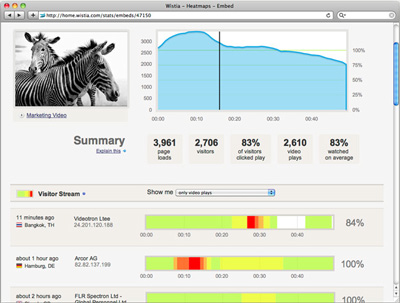Inside Sales Outsourcing and Lead Scoring
As an inside sales outsourcing company that builds automation engines we understand there is a great deal of confusion about what lead scoring is and why it matters today. This article will address both of these topics.
What is Lead Scoring?
 Lead Scoring is an objective ranking of one sales lead against another. Leads are ranked to prioritize what buyer targets are most likely to buy to determine where sales should focus their efforts first.
Lead Scoring is an objective ranking of one sales lead against another. Leads are ranked to prioritize what buyer targets are most likely to buy to determine where sales should focus their efforts first.
Until recently most companies did this at the front end of the sales cycle by identifying what decision makers had budget authority and what verticals and industries had the greatest need. A company would then buy this list, hand the list to sales and cold call.
But with the rise of automation software and content marketing, you can now engage a buyer with your online content and measure and analyze a buyer’s digital footprint. You can use this analysis to predict a buyer’s level of interest and where they are in their buying cycle. Combined with targeting the right buyers, you can now prioritize leads based on a buyer’s propensity to buy.
Lead Scoring ultimately gives your sales team a prioritized a list of leads for based on:
- Right Vertical Fit and Company Size
- Buyer Title
- Their level of interest based on their engagement with your digital content
As an inside sales outsourcing company prioritized leads are critical for successful delivery for our clients.
Why Does Lead Scoring Matter Today for Sales Outsourcing?
1. Lead Scoring Lowers Your Cost and Increases The Effectiveness of Calling
The mantra for most small business is to do more with less. Over the past several years we have experienced a major shift in buyer behavior that has turned selling with the conventional sales process of cold calling, qualifying a lead, presentation, and objection handling on its head. Sales still requires sales conversations. However, over the past several years buyers have stopped picking up the phone. Call-to-connect ratios have dropped from 18%-22% to 5%-10%. This means every connection you make now needs to count. Here is why:
- Five years ago every time a sales rep picked up the phone and called a prospect the prospect would pick up the phone 1:4 times or 1:5 times. So five years ago, making 100 calls a day you could expect to speak with 20 to 25 prospective buyers. If you typically converted 10% of your connections to next steps and you could you could move 1-3 deals forward per 100 calls.
- Today with a call to connect ratio. 1:10 to 1:20 you can expect a buyer to pick up the phone as little as 5 to 10 times per day if you are making 100 calls. So you can only expect to speak with 10 buyers a day. If you are not scoring leads and calling buyers cold you can still expect that 10% will convert. This means your success rate per 100 will be 0.5 to 1 deal moving forward per day at best. If you are scoring leads and call interested buyers you can expect 30% will move forward. This takes you back to the same conversion ratios we experienced when connection ratios were 1:4 to 1:5 five years ago. Lead Scoring does not solve the challenge of buyers not picking up the phone. Lead Scoring improves the results of the connections when they do occur.
Calling leads that are not interested in your solution is now counter-productive to your inside sales outsourcing efforts, causes enormous inefficiencies, and now dramatically impacts your cost of sales. Your sales reps work furiously to stay afloat while at the same time becoming less efficient in their daily tasks. If you are not talking to interested buyers you are running to stand still.
2. Lead Scoring Measures and Reports on Your Buyers Digital Engagement
 The buying process for most solutions now starts with an initial phone call to share information, an inbound lead, or an outbound email campaign. Buyers then typically want you to educate them digitally before they will engage with a sales rep. In fact, according to Marketing Sherpa’s 2016 report, 70% of buyers want to learn about new products and solutions with an email that contains an educational article that they can share with others involved in the buying process. The buyer is then open to a meeting but expects you to continue to share additional content they can share with other decision makers and influencers.
The buying process for most solutions now starts with an initial phone call to share information, an inbound lead, or an outbound email campaign. Buyers then typically want you to educate them digitally before they will engage with a sales rep. In fact, according to Marketing Sherpa’s 2016 report, 70% of buyers want to learn about new products and solutions with an email that contains an educational article that they can share with others involved in the buying process. The buyer is then open to a meeting but expects you to continue to share additional content they can share with other decision makers and influencers.
| 90% of buying decisions now require at least two buyers or a committee.
(Harvard Business Review – 2010) |
Decision Making Committees consume 5-7 pieces of content before engaging with sales
(Forrester -2014) |
Success now requires content that helps your buyers learn about your solution digitally. In most cases, this replaces sitting through intro pitches by business development reps. This is a great time savings for your business, but this also means you lose the insights that were gained by the sales rep during this early sales activity. Lead scoring allows you to capture information from that digital conversation by measuring what content the buyer is engaging with. This buying behavior can be reported to your sales team.
Lead Scoring Gives Your Sales Team
The Ability to Track the Digital Conversation
& To Notify Sales when The Buyer is Sales Ready
3. Lead Scoring Gives Sales a Faster Path to Revenue at Lower Costs
This data from Sirius Media demonstrates how lead scoring can impact your success rate at multiple stages of the funnel. The key metrics are how many connections you need to convert a cold lead vs. a warm lead and then a warm lead to a qualified opportunity. Better connections at the right time means more conversions with less calls at every sales stage.
And while you are connecting with targets that are not interested (if you are still calling cold leads), you are also missing dozens of hot leads and real opportunities—because you have not tracked their digital engagement and moved them to the top of your calling list. Ultimately, your inside sales outsourcing team are at least 4X less efficient.
With fewer deals available, your sales reps need every advantage to get in front of active opportunities and connect with them before the competition. To do that, they need to be working with prioritized leads. Especially since today, buyers start gathering information long before they have established things like budget and timeline. According to Sandler Sales Trainers the first mover still has a 60% advantage if they are the first seller in front of the buyer.
And this “Digital Body Language” reveals a great deal of honest information about a lead’s level of interest in your company and where they are in their buying cycle. It often serves as a more powerful and honest indicator than data collected over the phone or on a web form website. In addition, having this information ensures you will be engaged at the front of the buying cycle and not a late entry.
How We Can Help
Gabriel Sales builds sales automation engines for B2B companies and helps support our marketing efforts by also supplying insides sales outsourcing teams that combined both marketers and reps following up with highly scored leads. If you would like to learn about our approach visit our About Us Page or feel free to Contact Us to learn more about how we can help with your insides sales outsourcing and outsourced marketing needs.





 Now that you have identified your primary goals and your KPIs for those goals, you now need to identify the tools that you going to use to help you become more data-driven as a marketer.
Now that you have identified your primary goals and your KPIs for those goals, you now need to identify the tools that you going to use to help you become more data-driven as a marketer.
